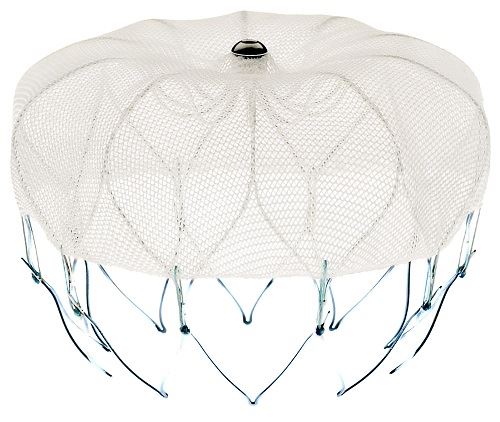What to Expect Before, During and After the WATCHMAN Device Procedure

Image provided courtesy of Boston Scientific. ©2020 Boston Scientific Corporation or its affiliates. All rights reserved.
The procedure usually takes one hour, but the preparation and recovery time may add several hours. It is usually performed in the cardiac catheterization lab.
Below is an explanation of what to expect before, during and after the WATCHMAN device implantation procedure.
To learn whether the WATCHMAN device is right for you, request an appointment to speak with an RWJBarnabas Health cardiac specialist.
Preprocedure Prep
- On the evening before the procedure, eat a normal meal.
- Do not eat, drink or chew anything after midnight on the night before your procedure. If you must take medications, take them with only sips of water.
- Remove all makeup and nail polish.
- On the day of the procedure, leave all jewelry at home.
- Wear comfortable clothing when you come to the hospital.
- If you normally wear dentures, glasses or hearing devices at home, plan to wear them during the procedure.
What to Expect During the WATCHMAN LAAC Procedure
- You will change into a hospital gown.
- A nurse will start the intravenous (IV) line in your hand or arm, allowing medications and fluids to be administered during the procedure.
- An anesthesiologist will provide anesthesia so that you are comfortably asleep for the procedure. Your physician will use a local anesthetic to numb the insertion site. The insertion site is usually a blood vessel (artery) in your groin.
- Once the local anesthetic has taken effect, a small needle is used to access the vein.
- A vascular catheter (delivery tube) is inserted.
- Through the delivery catheter in your vein, the WATCHMAN device is inserted and guided into the left atrial appendage of your heart.
- An ultrasound catheter is placed in your esophagus to help your doctor visualize placement of the device.
- Once in place, the WATCHMAN device is deployed and the left atrial appendage is completely closed off.
- Once the procedure is complete, the catheter is removed and the insertion site is closed with the use of an absorbable suture.
After the Procedure
You'll be monitored overnight in a hospital room. Most patients go home the following day. While in the hospital:
- A nurse will monitor your vital signs, the insertion site, and circulation and sensation in the affected leg.
- You must stay in bed for several hours as recommended by your doctor.
- Tell your nurse right away if you feel any chest pain or tightness, or any other pain, as well as any feelings of warmth, bleeding, or pain at the insertion site.
When you are discharged, your doctor will give you instructions to follow during your recovery.
At RWJBarnabas Health, we are the destination for ensuring your heart health. To learn more about the WATCHMAN procedure and whether it is right for you, connect with one of our expert New Jersey cardiac specialists.
